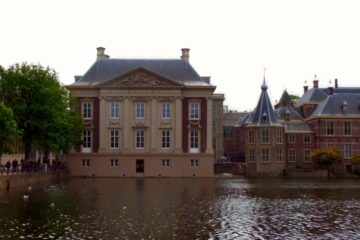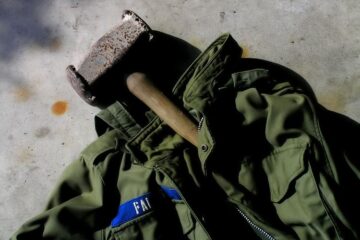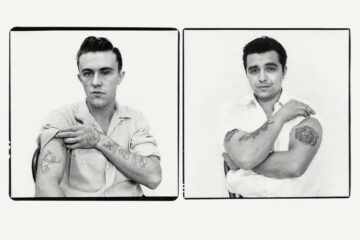
In places where large groups of people gather, be it for a music event or a football match, there are always risks that things get out of hand, potentially with lethal consequences. Behavioural sciences and technology meet to devise new methods of crowd control – though technological innovations may also make this task more difficult.
‘In the Netherlands there is a lot of expertise on crowd control, for instance with event organisers, the police and local authorities’, says assistant professor Peter de Vries, who studies the behaviour of large groups and methods to influence them. ‘Keeping large crowds in check is important in order to prevent calamities. Professionals use many channels to communicate with crowds, both verbal and non-verbal.’
De Vries investigated five large events, which allowed him to develop a list of do’s and don’ts. For example, as soon as a location is beyond seventy percent of its capacity, organisers start informing potential visitors that it is full. Many people will be dissuaded to go there, while people who still show up can be admitted without compromising safety.
‘Our expertise on this subject is largely anecdotal’, De Vries observes. ‘There is hardly any systematic research. Technology provides new methods for crowd control, as well as new challenges. To make sure a location is evacuated before bad weather strikes, as an organiser you may want to give an early warning. What you don’t want is the audience, relying on social media, to decide that you are exaggerating and stay put. So, there are new dimensions that justify closer, more systematic research into crowd control.’
Hooligans
Naturally, the type of control depends on the crowd. Group behaviour at music festivals is typically different from the one at football matches. Small groups of hooligans may wilfully try to create chaos, adding a new factor: not only managing the crowd itself, but also trying to isolate troublemakers from the rest. Here too, modern technology works both ways.
On the one hand, smartphones have greatly added to the capacity of hooligans to organise mayhem. On the other hand, advances in pattern recognition make it easier to spot them. De Vries explains: ‘If you have something to hide, this affects your behaviour. In groups of hooligans, for instance, isolating the group leader can help avoid trouble. It appears that a hierarchy can be traced by tracking the number of handshakes within the group – the person who gets the most handshakes emerges as the group leader. In a railway station someone who joins a queue at the ticket machines, seems to buy one, but then re-joins the queue is probably not there to actually travel, but has other intentions.’
Though laboratory settings can never accurately mimic real life situations, they are useful to study fundamental effects. De Vries supervised an experiment where a group of four students had to perform a task during which one would become the leader of the group. The goal was to see if analysis of video material could help identify who would emerge as the leader. It appeared that high frequency of movement and gestures was an important indicator. In another experiment two groups had to play ‘smugglers and custom agents’. All participants were fitted with GPS-trackers. The GPS data proved to be sufficient to tell who belonged to which group. Though the results are significant, De Vries warns they are still far from fool proof – and even if results would be a hundred percent correct, they would still call for interpretation.
Anti-social behaviour
After all, while technology may help in detecting anti-social behaviour or tracking down ringleaders, the question remains: what next? Psychological insights are essential to undertake the right action in crowd control. Actually, the availability of technology itself may already change the situation, for better or worse, if people are aware of its potential. De Vries: ‘Cameras in public spaces make people feel more secure, but they also remind them that the situation is potentially insecure. As a consequence people will look differently at groups of youngsters hanging around, depending on the presence of cameras.’
So, ultimately, there is intense interaction between crowds, the officials who are to ensure their safety and technology. If engineers and behavioural scientists do not join forces, both may end up designing tools and methods that fail their reality checks.





